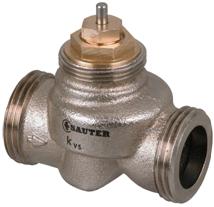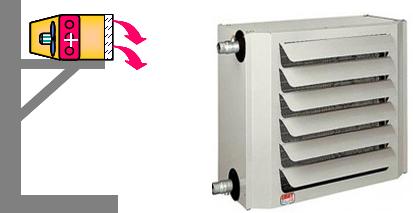To effect a power P variation on a water-fed emitter, we can act on:
- Inlet temperature (of water)
- Inlet flow (of water)
- The air flow through the emitter
We therefore keep in mind 3 possible principles of power variation of a heating
or air conditioning system:
- Variable water temperature control (air and water flows being constant) depending on inside (or outside) temperature
- Variable water flow control (water temperature and air flow being constant) depending on inside temperature
- Variable air flow control (water temperature and water flow being constant) depending on inside temperature
Variable water temperature control (constant flow generally) is the most
usual solution for the control of a group of emitters (ex: regulating a
radiator or convector flow circuit).
To vary water temperature we can act:
- On the power source flow (or the operating cycle) of the boiler (or the compressor of a chilling unit).
- On the progressive opening of 3 or 4 way control valves installed on the outlet or return of distribution circuits. They allow variable mixing of hot water produced by the boiler (or cooled water produced by the chilling unit) and cooled hot water (or reheated chilled water) returning from the emitters.

Variable water flow control (constant water temperature generally) is used for controlling a single unit at a time. (ex.: control of each heating or chilling coil of air handling units).
To vary water flow, we act by the progressive opening of 2 or 3 way valves.

Variable air flow control (constant water temperature and flow) is used for example for the control of air heaters (simple on/off of a fan).

Finally these different principles of regulating (variable water temperature and flow, variable air flow) can be combined to obtain the optimal result.
Thus:
- A heating circuit, run by an ambient thermostat, feeding thermostatic valve equipped radiators will show both variations in temperature and water flow.
- A multi-speed fan convector can be controlled by both variations of water flow and air flow.
Etc…
